Introduction
Prescription lenses are available for many VR headsets, from several companies. These are aimed at people with poor vision, who cannot see clearly in VR. Although the display(s) are very close to your eyes, they are optically focussed further away. In the case of the Vive, the display is apparently focussed at 1 or 2 meters. If you cannot see clearly at this distance, you will need some sort of vision correction to use a Vive; either glasses, contacts, or in this review, prescription lens adapters. These adapters do not replace the existing lenses – rather, they sit on top of the existing lenses. This review covers my experience with Widmo VR’s prescription lenses for the Vive, and with their company.
Initial Impressions
The lenses were well-packaged. When I lightly shook the cardboard shipping box, they made no noise, and nothing rattled. I opened this exterior box to find another box inside, made of card, containing the lenses themselves. The card box contains two individual foam pouches, one housing each lens. The packaging is safe and prevents any scratching, but is a disposable design, rather than something you can store the lenses in. I want to note here that in my case, I have no plans to remove the lenses. I keep them installed in my Vive.
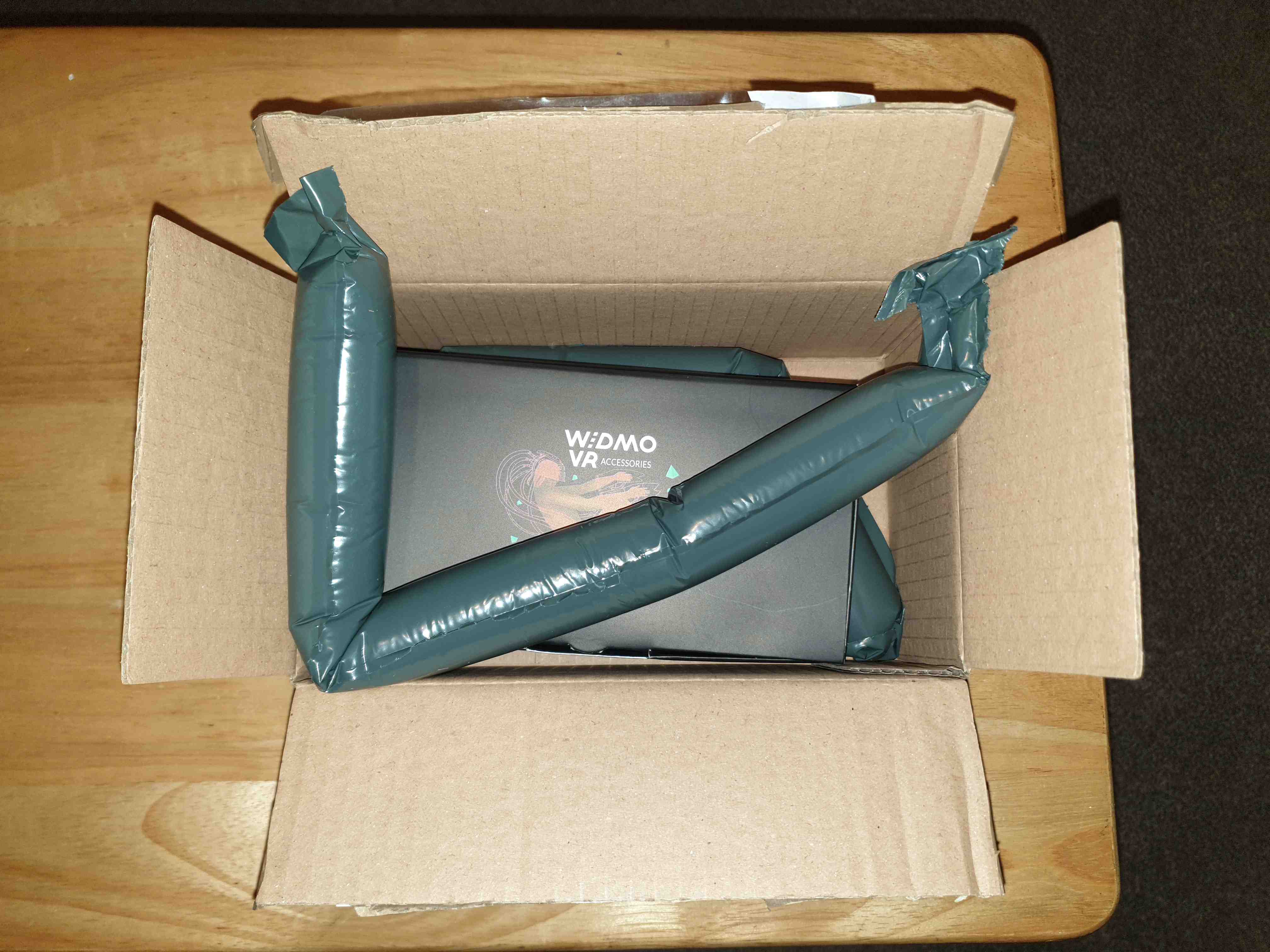
The shipping box, containing the Widmo card box.
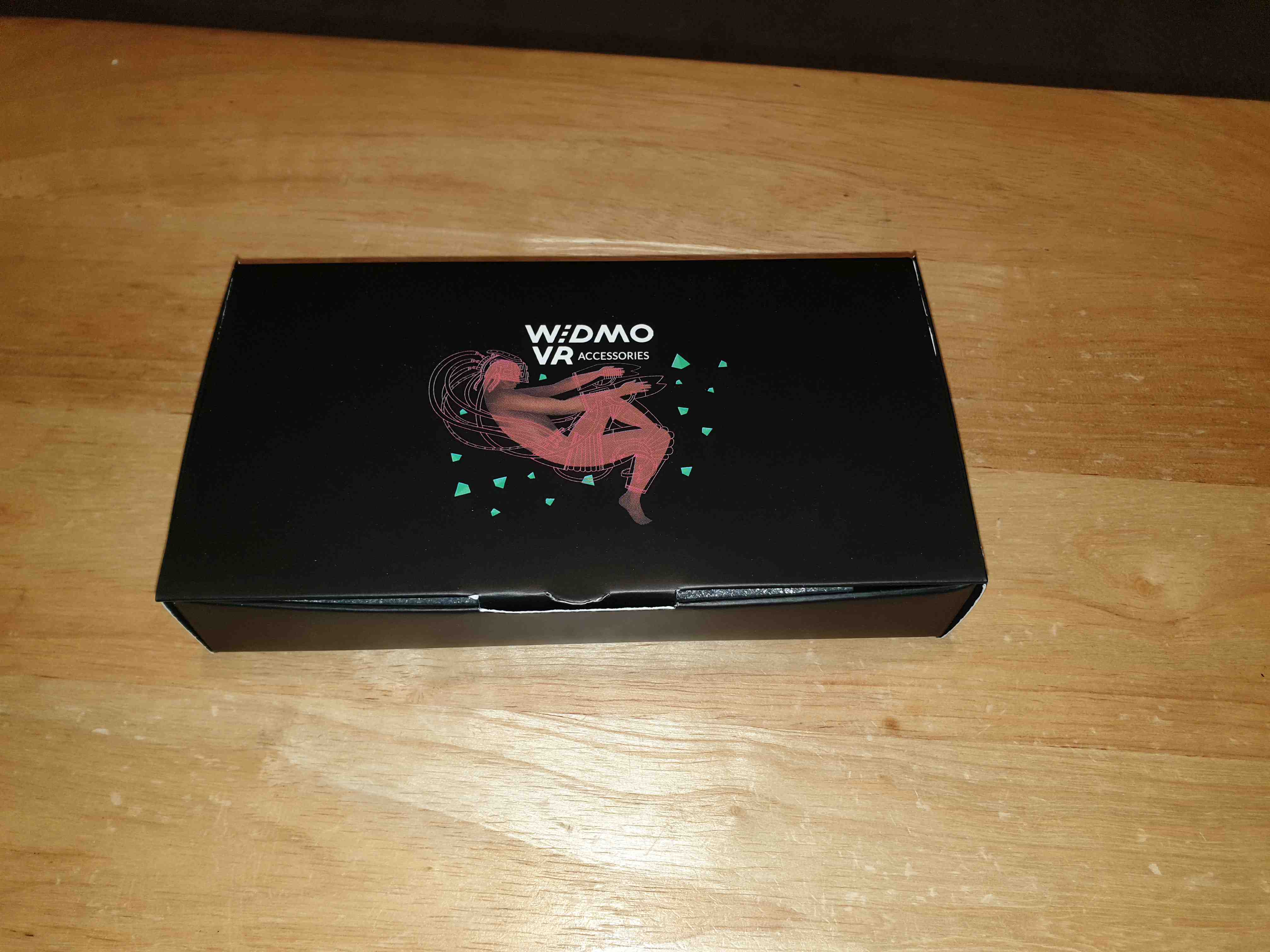
The Widmo card box.
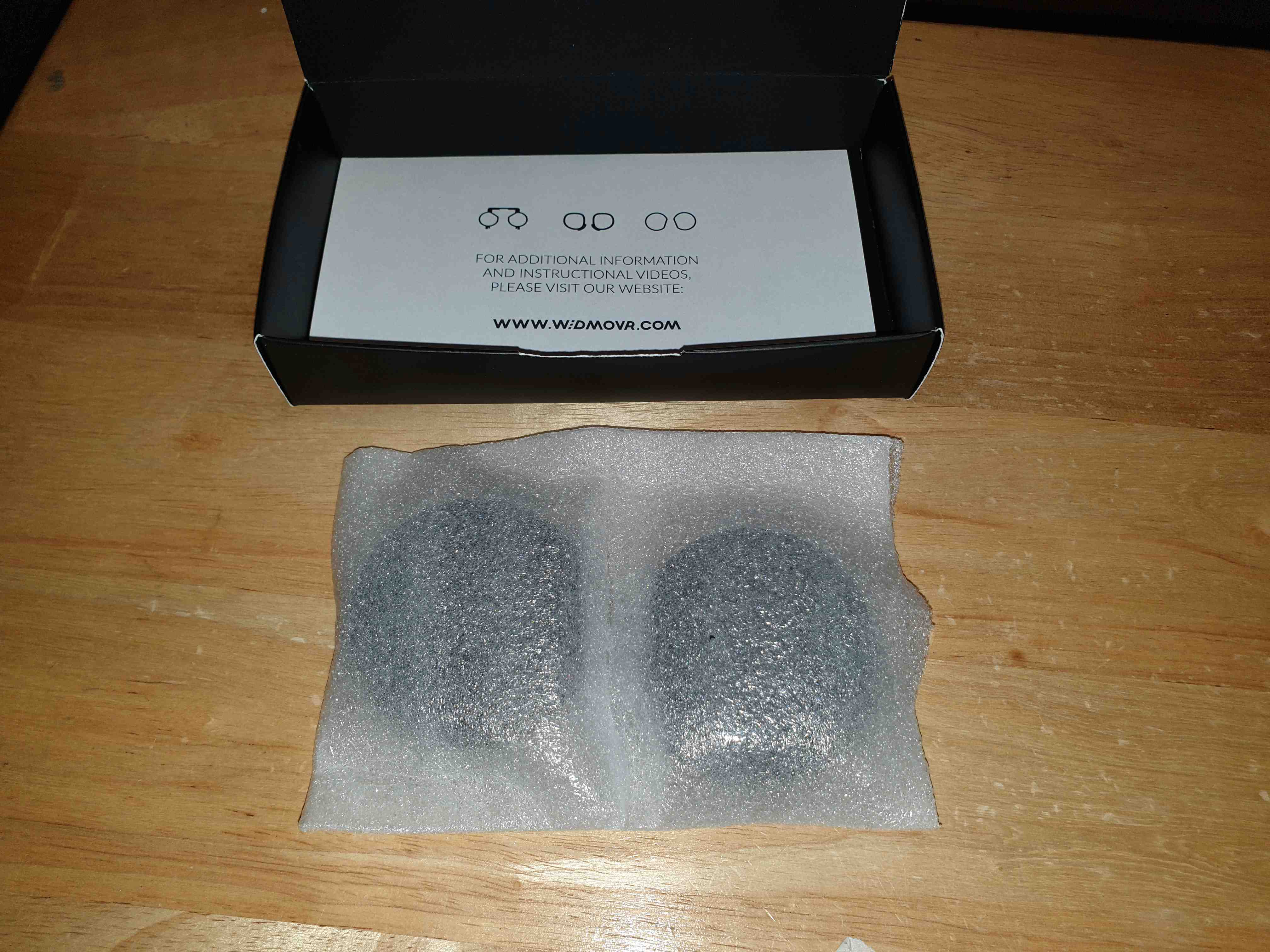
Lenses in protective foam, next to card box.
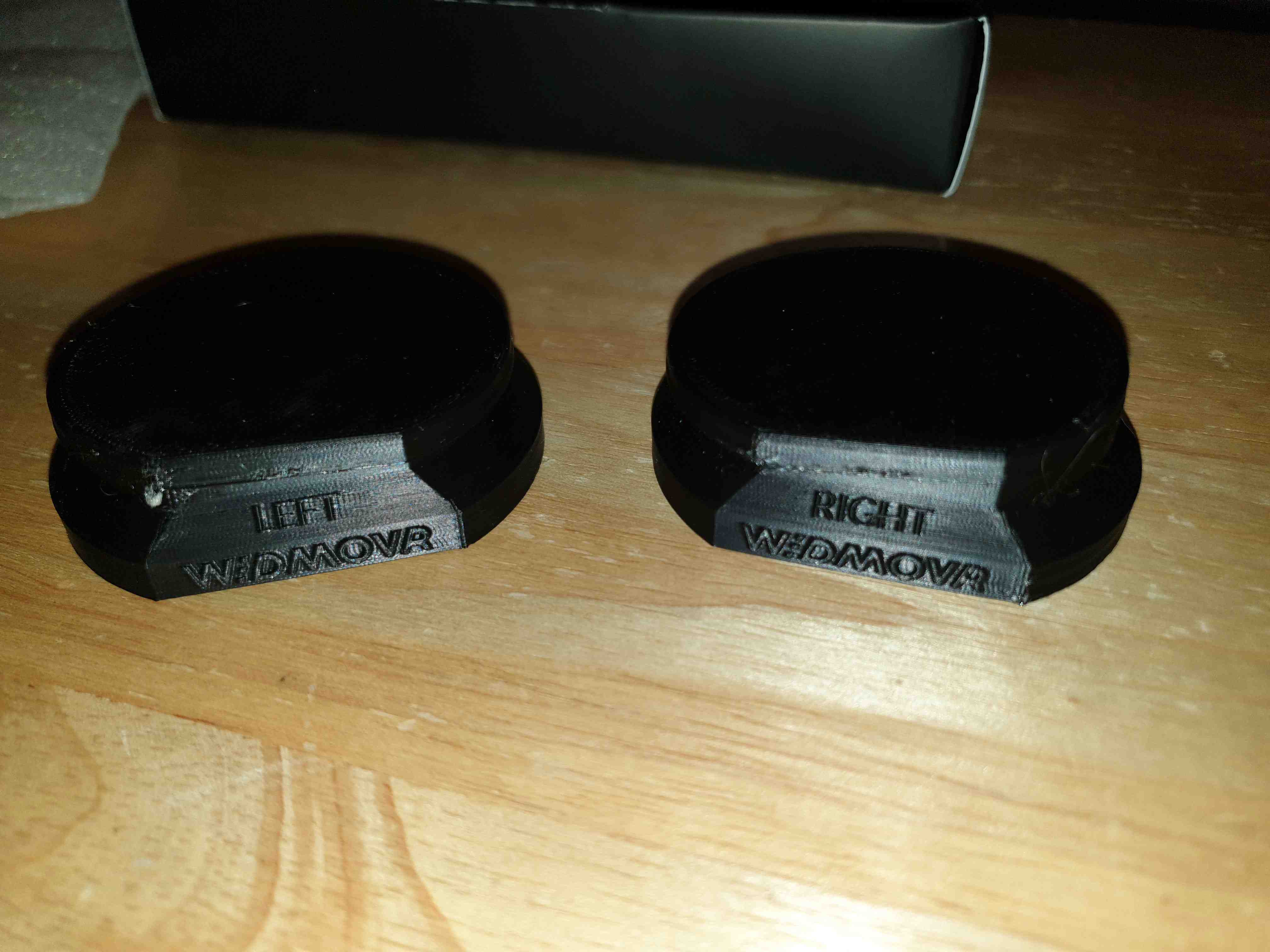
The lens adapters, marked "left" and "right".
The prescription lenses sit further away from the stock lenses than I expected – the distance between the top of the stock lenses and the top of the prescription lenses is about 8mm. I recall seeing a comparison with another manufacturer where the Widmo lenses protruded a lot less than their competitor, which is one of the main reasons I purchased from them. The lens adapters, which hold the lenses, are 3D printed and so are not made of smooth plastic, and have a 3D-printed look to them. They are marked “left” and “right”.
The lenses are quite easy to insert, so long as your eye relief adjustment is working – that’s the part of the Vive that moves the displays further from your eyes. In my case, the eye relief only goes back to the second or third notch on the left side, so installation was more difficult. To make it easier, I removed the foam and nose piece. Widmo have several GIFs on their website showing the installation. The adapters simply push over the existing lenses, forming a friction fit. You can see that on the product page. To be clear, I'm not affiliated with them in any way.
The lenses do come with some lens covers, but the way the covers attach is quite cheap and although I was looking forward to those covers, I’m not planning to use them, as clicking them into place seems to take a decent bit of force. If they screwed on, that would be much better, but I understand this is difficult when 3D printing.
Concerning the lenses themselves, after unpacking them, I held one up to my eye and looked through it, and the prescription seemed appropriate. The lenses seem to be made from glass, rather than plastic that is used for the Vive lenses. I then cleaned both my Vive left lens and prescription left lens, and installed the left side only, just to see how far the new lenses protrude. I then installed the right lens and put on the headset.
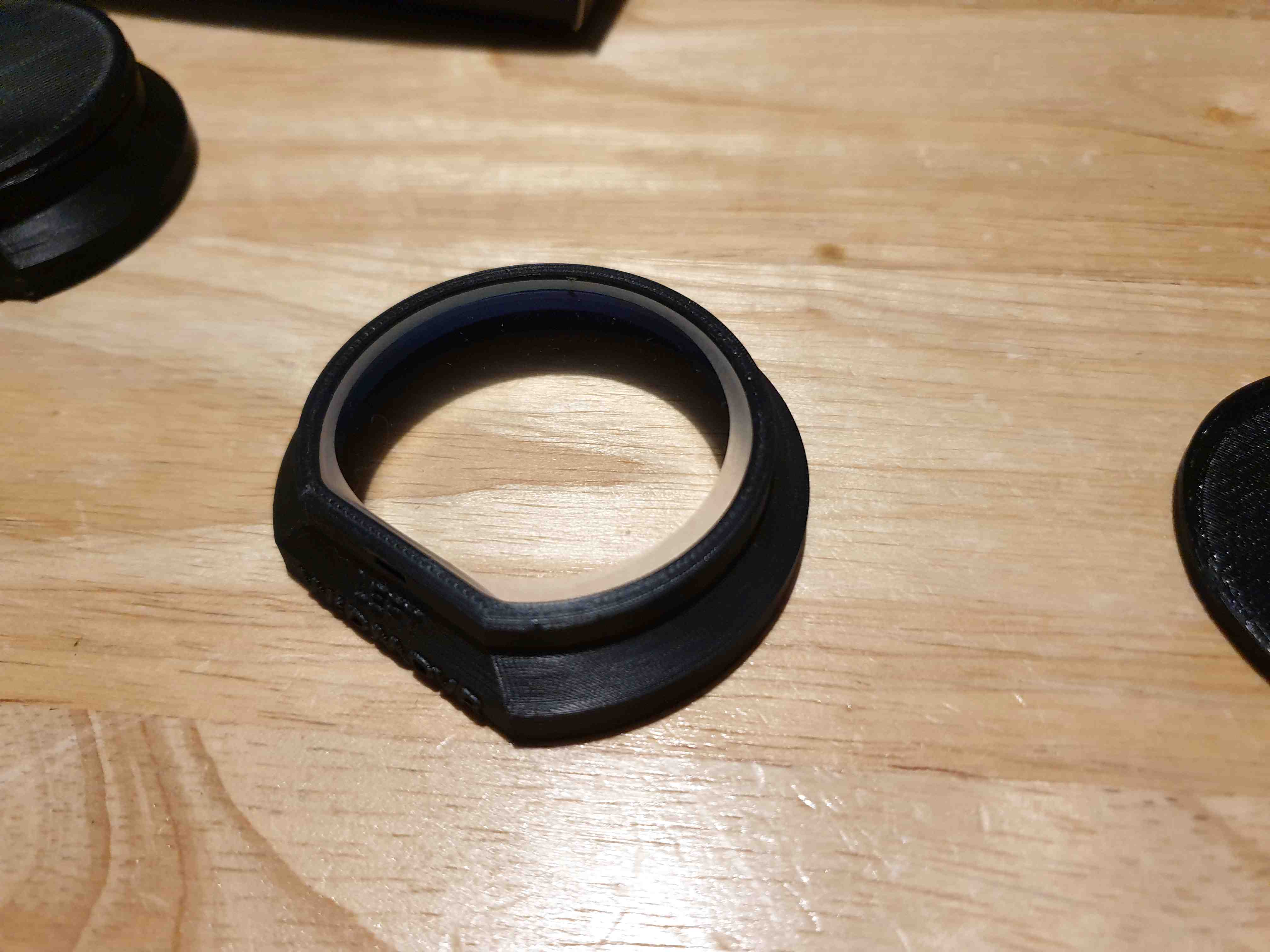
The lens adapter with cover removed, showing the prescription lens.
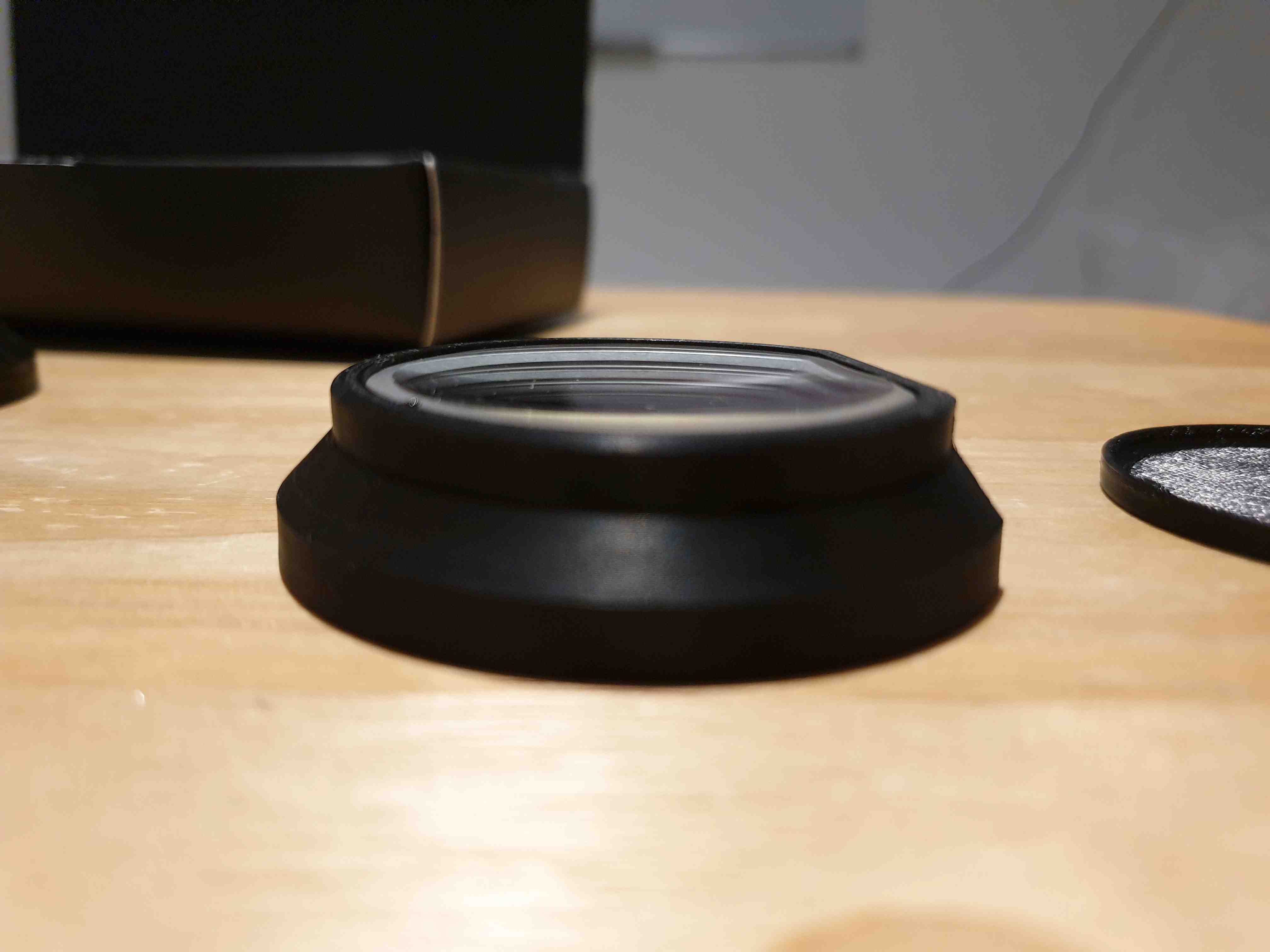
Another angle of the adapter and lens.
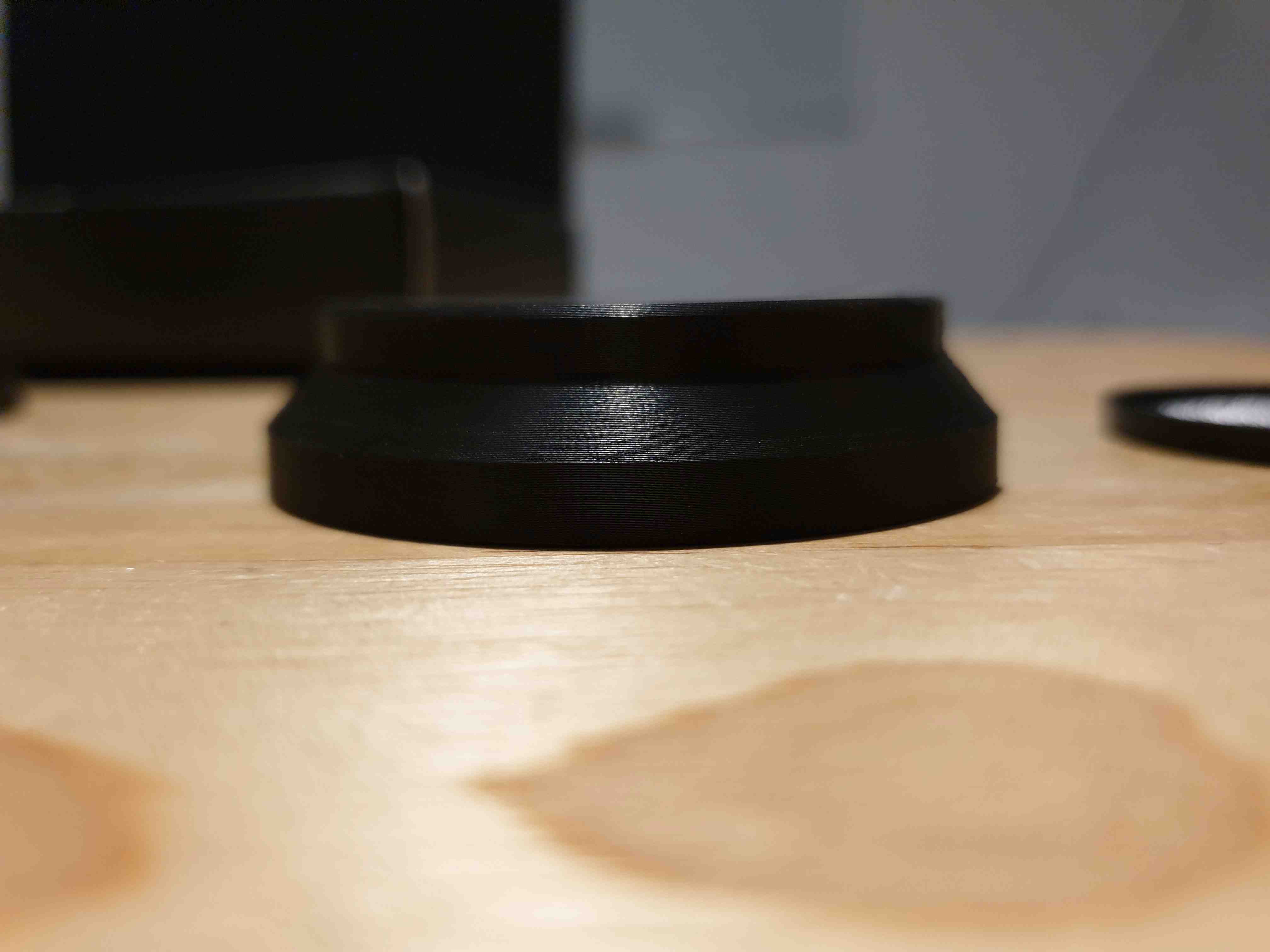
Side image of the lens adapter, intending to show that the top of the prescription lens is flush with the top of the adapter.
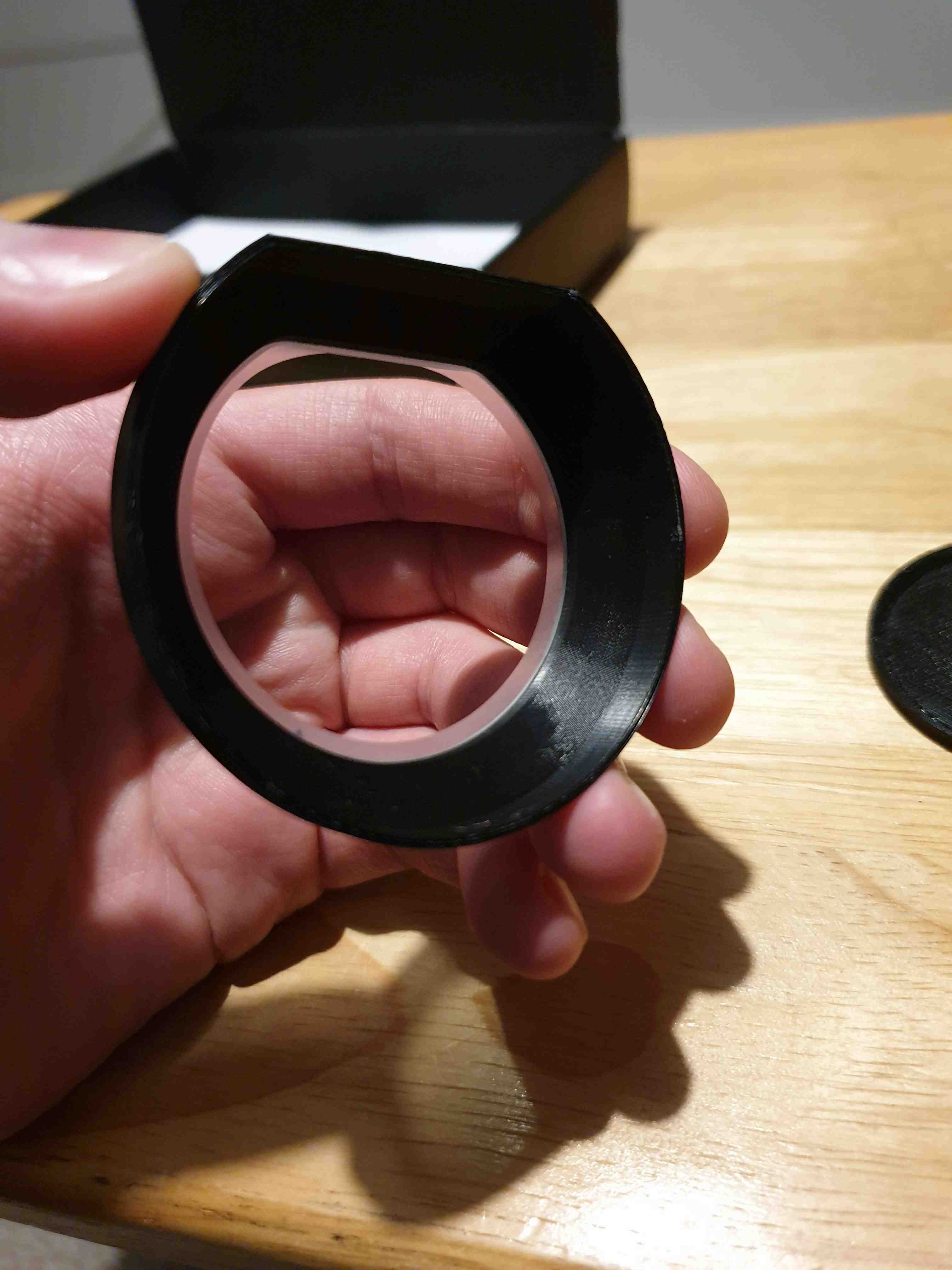
The underside of the lens adapter.
The fit on my face was a little different; sort of like having someone else’s glasses on your nose, but I expect that will pass. I did see some others mention similar regarding prescription lens inserts.
In terms of the lens adapters fitting to the headset, the fit is very good. They simply push over the existing lenses, and they are solidly in place. There is no rattle of any kind, they are very secure, but also easy to remove. It’s a friction fit.
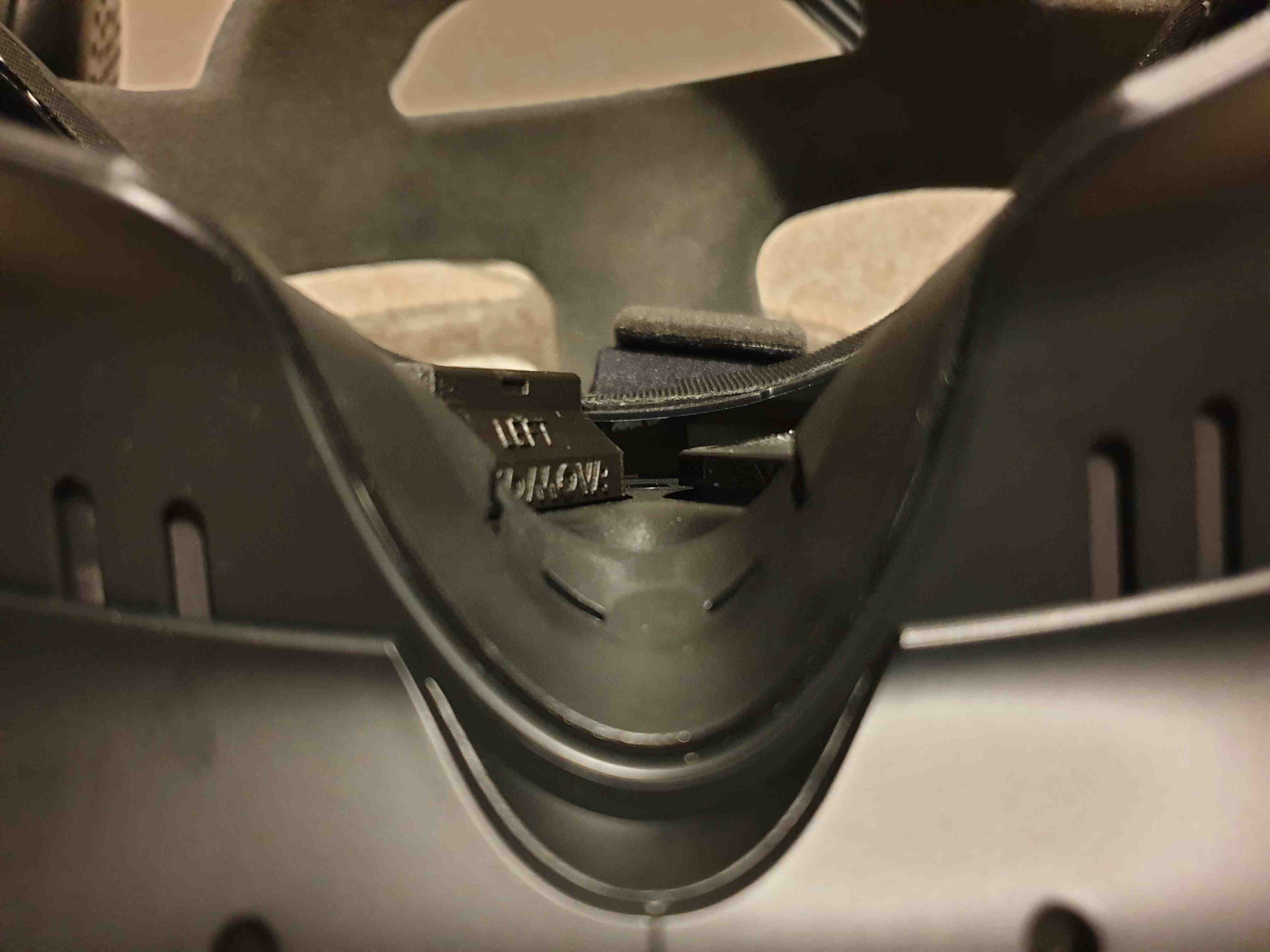
Vive with only one Widmo adapter installed, showing the protrusion. The distance between the top of the right and left lens is 8mm.
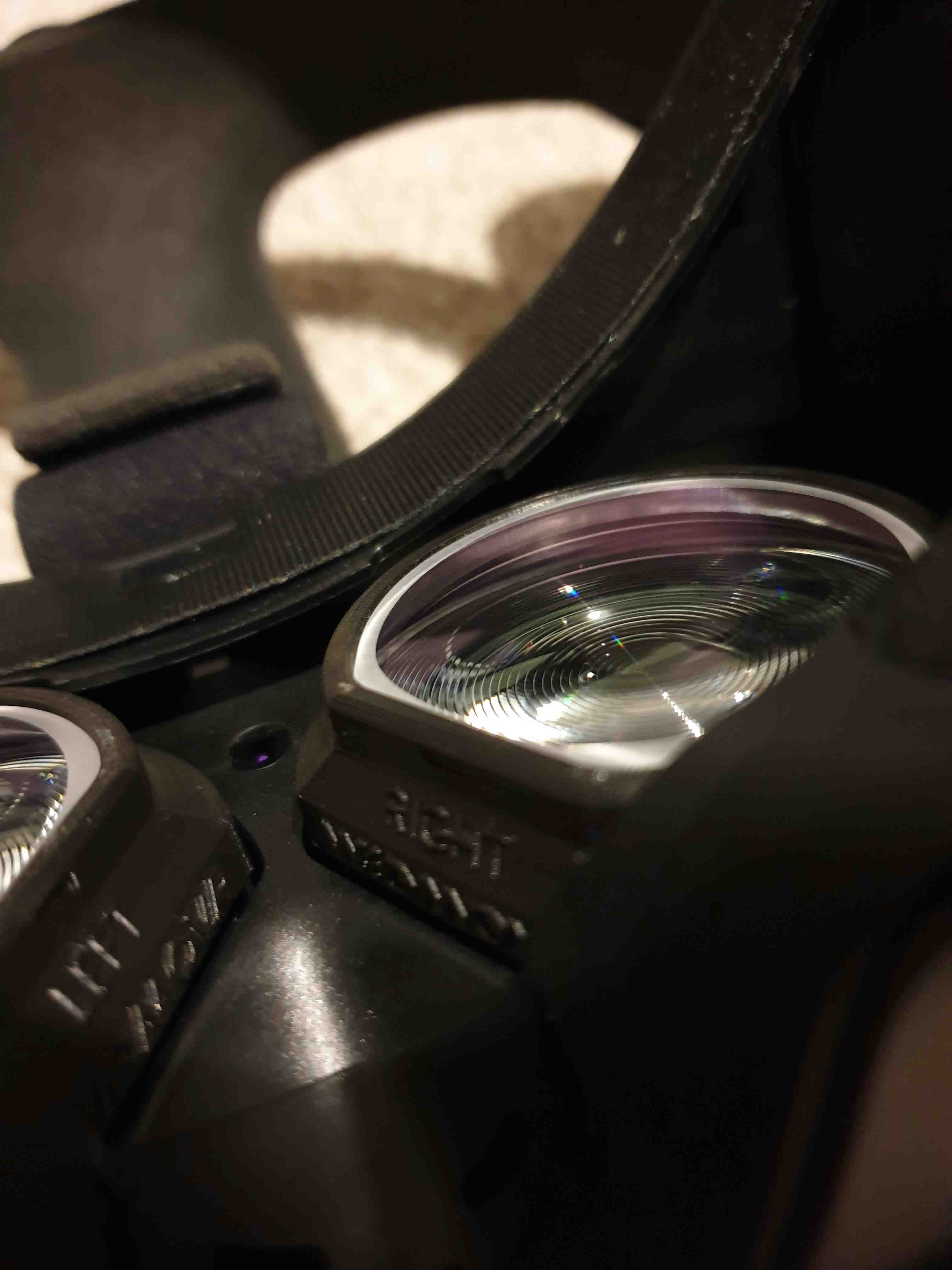
The Vive with both adapters installed.
Experience
The sweet spot appears to be much more strict when using these adapters. I found that, with these adapters, I had to wear the headset much higher on my face to get a clear picture across the lens. Some complain of the sweet spot on the Vive as-is, and that looking across the lens by moving the eyes makes things appear blurry. Personally, I’ve found this blurring to be almost non-existent with the stock Vive lens setup, and I believe it’s because I’ve had my eyes so close to the lenses. I use my Vive with the 6mm VR Cover on the lowest eye-relief setting, and have done for years, in order to maximize field of view. When moving your eyes further from the lenses, not only can this reduce field of view, but it can also increase blurring when you look across the lens with your eyes, and increase glare.
So, what do these adapters do to the field of view? Nothing. The FOV will only reduce if you find that you need to dial-back the eye relief in order to use them. I have found that my eyelashes are now touching the lenses a lot more, but feel that I will keep the eye relief on the lowest setting as this eyelash contact isn’t detracting from my visuals. I verified the FOV using an FOV testing app. My results were very similar before and after the lens inserts, with around 110 degrees horizontal and vertical, which is close to the Vive specs. I actually measured slightly larger after, which may be because the new lenses forced me to position the headset more optimally.
The Vive's stock lenses contain concentric rings, and in scenes with high contrast, these can be seen and that detracts from the visual experience. I do think these additional lenses make the concentric rings a bit more visible in general (glare), but I think this is probably a side-effect of adding an additional lens. I expect you would find a similar, or perhaps worse result if you wore glasses in the HMD. I have not personally tried wearing glasses with the Vive as I did not want to scratch the Vive lenses, instead I would use contacts.
I have not noticed any distortion from these lenses, and have been playing a bunch of Katana X as a test for hand-eye coordination. That has been going quite well, and I’ve even broken my own records a few times, likely just due to playing it more. I’m now ranked 24 in Tatami single strike; so I don’t think these lenses are causing any issues. My hand-eye coordination has remained pretty good.
Delivery and Order Experience
Delivery took 21 days from the date of order, however I did order on 31st December, which is New Year’s Eve. I did expect delivery to take longer during this period, and that is understandable. The lenses ship out from Poland and I am in the UK. The total cost was 74 EUR in their currency, which was £66 for me. This includes delivery.
When I ordered, I got a confirmation, but no delivery estimate, which I found to be weird. I contacted support, saying that I understood it was the New Year period, but wanted an estimate. They were unable to provide this, and responded by quoting the estimates on their website, and by saying that demand was high and it may take longer. As a customer, it would be nice if they could provide a proper estimate.
Prior to purchasing, I asked about the high-index lenses, which are thinner. I was curious whether they were worth buying, and whether they would affect my FOV due to lens thickness. They said the high-index option doesn’t affect how close your eyes are to the adapters, so doesn’t affect FOV. It seems this option is not necessary unless you have a very strong prescription, in which case the website auto-enables it.
I also asked if the Vive lenses are compatible with Vive Pro or Index. They said they are compatible with Vive Pro, but not Index.
They responded quickly to my enquiries.
Conclusion
Personally, I’m quite happy with my purchase and will keep using these lenses. If I upgrade to something other than a Vive Pro, I’ll buy another set. These lenses make the device a lot easier to use, and the convenience factor is very important to me.
For me, these lenses were not intended to compete with glasses, but with contact lenses. I have always had to insert my contacts before using my Vive, and I felt that timing my Vive with my contacts was a pain. Contacts produce a perfect visual result, and I was prepared to sacrifice in some areas for the convenience of being able to simply put on my Vive and be able to see things. The glare is a bit worse, my eyelashes touch the lenses more, but I feel this is a worthy trade-off for the huge convenience factor. I think anyone reading this who is sight-impaired will agree that it’s nice to just be able to see things, and these lenses have given me that experience.
You can either chase perfection with contact lenses, or you can settle for a perfectly usable, much more convenient product, by getting some prescription lens inserts. After years of relying on contacts, I'll stick to the lens inserts.
Update: August 8th, 2020
These lenses have been great for me, but some months back I did decide to move the eye relief back a bit so that my eyelashes were not touching the lenses. I did not find this contact to be uncomfortable, but when I would sweat, it would go onto the lenses from my eyelashes and so the lenses would require more frequent cleaning. To avoid this, I moved them further back. This means I have now sacrificed some FOV, but I think that's just something we sight-impaired people will have to deal with.
The lenses are still working perfectly well, and I'm still very happy with them.